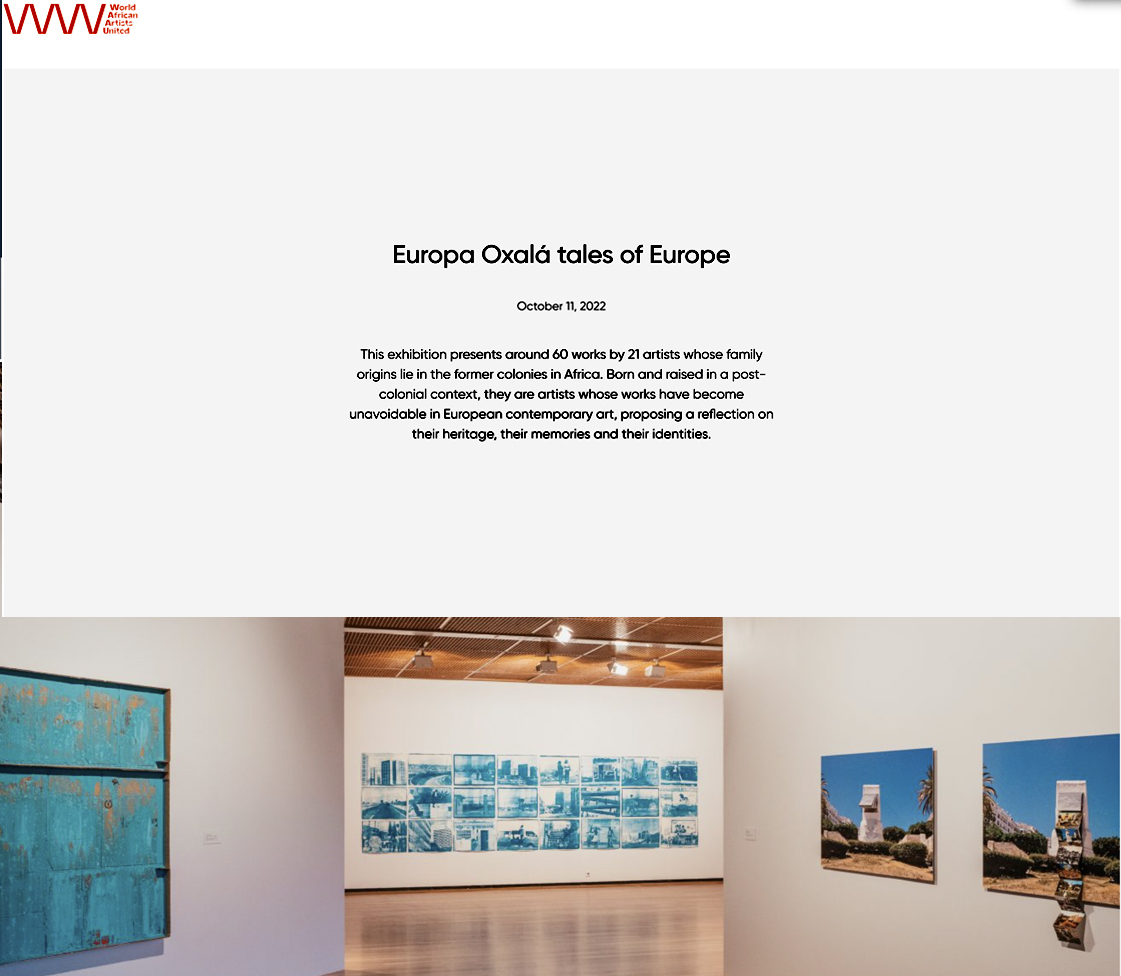Press File

Europa Oxalá tales of Europe
11.10.2022
The culmination of a long research
“I live in Lisbon, and I live in São Tomé. Being European represents the new man in the global context”, a phrase from a photograph in the series Afro Descendents, by Pauliana Valente Pimentel, one of the Portuguese artists in the Europa Oxalá exposition. Who said it, the artist René Tavares, photographed in his studio of large paintings, full of freedom, covering his face with a tchiloli mask. In the series, in addition to René, there are portraits of the actresses Isabel Zuáa, Nádia Iracema, Cléo Tavares and the artists Cristiano Mangovo and Acuã Pessoa who, through their work and attitude, have contributed to our recognition of the pluri-racial, transidentitarian country and how it was time to value the stories that shape us.
Visiting the group show “Europa Oxalá” gives us a more vivid and pressing idea of the creative power, questions, prepositions, and challenges of contemporary Europe. The notion of Europe seems to be even more coincident with its reality, as with the diverse desires and memories that make it up. In the exposition hall of the Calouste Gulbenkian Foundation, we browse through the 60 works in languages such as painting, drawing, sculpture, film, photography and installation, by artists whose names are not a mere list but a source of knowledge about identities, decolonisation, xenophobia, racism, migratory processes of people, worlds and materials and art. Aimé Mpane, Aimé Ntakiyica, Carlos Bunga, Délio Jasse, Djamel Kokene-Dorléans, Fayçal Baghriche, Francisco Vidal, John K. Cobra, Katia Kameli, Mohamed Bourouissa, Josèfa Ntjam, Malala Andrialavidrazana, Márcio Carvalho, Mónica de Miranda, Nú Barreto, Pauliana Valente Pimentel, Pedro A. H. Paixão, Sabrina Belouaar, Sammy Baloji, Sandra Mujinga and Sara Sadik, all of whom figure in the international art scene, represented in galleries and museums. They are Europeans with a strong connection to Angola, Madagascar, Cape Verde, Congo, Benin, Guinea, Algeria, and Burundi, often speaking the languages of these countries, and they live mainly in Portugal, Belgium and France. Their proposals are not anchored in the territorial question, at most they would be trans-territorial. In general, and it is part of the game to generalise diverse works in a collective exhibition, “Europa Oxalá” inscribes personal histories (as a point of view of oneself towards the world and towards the other) in an idea of a community of blood vessels where the same history of each one circulates and where recognition is given to the fluid place from which they depart, are or are projected. Without producing an overly didactic discourse helps us to reflect on Europe today, because “art does not repair the wounds of history, but it is a fundamental field for thinking about the politics of the present”, as Carla Baptista wrote about the exhibition in “Le Monde Diplomatique”.
With the co-curatorship of Aimé Mpembe Enkobo, Katia Kamelie and António Pinto Ribeiro, it makes sense that this exhibition on transits in and to Europe, circulates precisely through the old continent: it opened in Marseille (at the Musée des Civilisations de l’Europe et de la Méditerranée), is present at the Calouste Gulbenkian Foundation, in Lisbon, until August 22, and will follow to the AfricaMuseum, in Tervuren, Belgium.
MORE
